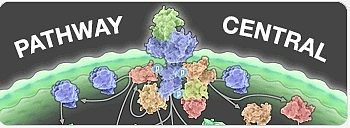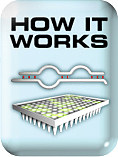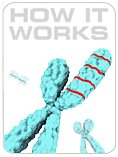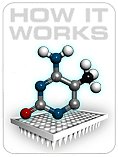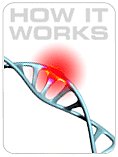
产品详情
文献和实验
相关推荐
服务名称 : 通用细胞因子PCR芯片
提供商 :SAbiosciences
“英拜为您实验加速”技术服务网址:http://www.yingbio.com/
服务热线:400-696-6643、 18019265738
邮箱:daihp@yingbio.com 、 huizhang1228@foxmail.com
Common Cytokines PCR Array
通用细胞因子PCR芯片
| Product | Species | Technology | Cat. No. |
| Common Cytokines PCR Array | Human | Gene Expression | PAHS-021Z |
| Common Cytokines PCR Array | Mouse | Gene Expression | PAMM-021Z |
| Common Cytokines PCR Array | Rat | Gene Expression | PARN-021Z |
| Common Cytokines PCR Array | Pig | Gene Expression | PASS-021Z |
通用细胞因子PCR芯片可用于分析84个重要细胞因子基因的表达。这一芯片包含了干扰素和白细胞介素,以及骨形成蛋白(BMP)和TGF-.家庭的成员,也包含了血小板来源和血管内皮生长因子基因,肿瘤坏死因子以及其他细胞因子相关基因也包含在内。通过实时定量PCR的方法,研究者即能够利用该芯片简单可靠地同时检测细胞因子相关基因的表达。
Interferons: IFNA1, IFNA2, IFNA4, IFNA5, IFNB1, IFNG.
Interleukins: IL10, IL11, IL12A, IL12B, IL13, IL15, IL16, IL17A, IL17B, IL17C, IL18, IL19, IL1A, IL1B, IL1RN, IL2, IL20, IL21, IL22, IL23A, IL24, IL25 (IL17E), IL27, IL3, IL4, IL5, IL6, IL7, IL8, IL9, TXLNA (IL14).
Growth Factors: CNTF, CSF1 (MCSF), CSF2 (GM-CSF), CSF3 (GCSF), FIGF (VEGFD), LEFTY2 (EBAF), LIF, NODAL, OSM, PDGFA, TGFA, THPO, VEGFA.
TGFß Superfamily: BMP1, BMP2, BMP3, BMP4, BMP5, BMP6, BMP7, GDF2 (BMP9), GDF5 (CDMP-1), GDF9, INHA, INHBA, MSTN (GDF8), TGFB1, TGFB2, TGFB3.
TNF Superfamily: CD40LG (TNFSF5), CD70 (TNFRSF7), FASLG (TNFSF6), LTA (TNFB), LTB, TNF, TNFRSF11B, TNFSF10 (TRAIL), TNFSF11, TNFSF12, TNFSF13, TNFSF13B, TNFSF14, TNFSF4 (OX40L), TNFSF8.
Other Cytokines: ADIPOQ, FAM3B, SPP1 (Osteopontin).
How it Works
The PCR array is a set of optimized real-time PCR primer assays on 96-well or 384-well plates for pathway or disease focused genes as well as appropriate RNA quality controls. The PCR array performs gene expression analysis with real-time PCR sensitivity and the multi-gene profiling capability of a microarray. Simply mix your cDNA template with the appropriate ready-to-use PCR master mix, aliquot equal volumes to each well of the same plate, and then run the real-time PCR cycling program. (Download user manual)

| Figure 1: | How PCR Arrays Work - Protocol Chart |
What it offers?
Guaranteed Performance* - ready-to-use for gene expression analysis
Time and cost saving - less than 30 min hands-on time for analyzing 84 genes
Ease of data analysis using our easy-to-use Excel-based data analysis template or web-based analysis tool
Layout and Controls: The PCR Arrays are available in both 96- and 384-well plates and are used to monitor the expression of 84 genes related to a disease state or pathway plus five housekeeping genes. Controls are also included on each array for genomic DNA contamination, RNA quality, and general PCR performance
You can easily perform a PCR Array experiment in your own laboratory, or send your samples to us and take advantage of our PCR Array Services.
*: when using complete PCR array system.
Performance Data Sensitivity:
The complete PCR Array System yields a greater-than 85 percent present call with as little as 25 ng as much as 5 µg of total RNA from a pathway representing genes expressed at a lower level (inflammatory cytokines and receptors).

| Figure 2: | PCR Arrays Let You See More Genes with Less RNA Different amounts of universal total RNA were characterized using the Human Inflammatory Cytokines and Receptors PCR Array, and the percentage of detectable genes was calculated for each RNA amount. As little as 25 ng total RNA yields greater than an 80% positive call, even for cytokines expressed at very low levels. |
Reproducibility
The complete PCR Array System demonstrates strong correlations across technical replicates, lots, and instruments with average correlation coefficients > 0.99 insuring reliable detection of differences in expression between biological samples.

| 050825_1 | 050825_2 | 050825_3 | 050825_4 | |
| 060111_1 | 0.993 | 0.989 | 0.995 | 0.992 |
| 060111_2 | 0.994 | 0.990 | 0.995 | 0.992 |
| 060111_3 | 0.992 | 0.990 | 0.993 | 0.992 |
| 060111_4 | 0.993 | 0.992 | 0.994 | 0.992 |
| Figure 3: | PCR Arrays Yield Highly Reproducible Results Four replicate sets of raw threshold data (1-4) obtained by two different scientists (A & B) at two different times (050825 & 060111) on Human Drug Metabolism RT² Profiler PCR Arrays are directly compared. The results demonstrate a high degree of correlation (R2 > 0.990). |
Specificity
The complete PCR Array System, with high quality input RNA, is guaranteed to yield single bands of the predicted size without primer dimers or other secondary products thus providing the most accurate real-time PCR results possible.

| Figure 4: | PCR Arrays Amplify A Single Gene-Specific Product in Every Reaction. Universal total RNA was characterized on the TGFβ / BMP Signaling Pathway PCR Array, followed by dissociation (melt) curve analysis. PCR Arrays specifically detect individual genes despite the expression of related gene family members in the same RNA sample. |
Application Data
Cancer Research:To ascertain the oncogenic route that two different human breast tumors have taken, the relative expression level of cancer- and adhesion-related genes in normal and two different cancerous tissues were compared.
Template cDNAs prepared from total RNA of normal human breast and two human breast tumors (BioChain Institute, Inc., 5.0 µg) were characterized in technical triplicates using the Human Cancer PathwayFinder™ PCR Array and the Human Extracellular Matrix & Adhesion Molecule PCR Array with the RT² SYBR Green / Fluorescein PCR master mix on the Bio-Rad iCycler®.

| Figure 5: | ECM & Adhesion PCR Arrays Revealed Up- and Down-Regulated Genes in Breast Cancer Total RNA from normal human breast and a human breast tumor were characterized in technical triplicates, and the relative expression levels for each gene in the two samples are plotted against each other in the Scatter Plot. Genes encoding the matrix metallopeptidases (MMP3 & MMP9) and their inhibitors (TIMP3) are up-regulated, while genes encoding integrins (ITGB3 & ITGB4) are down-regulated, by at least three-fold (outside the silver field) in breast tumors relative to normal tissue. |
Toxicology Research:
Rezulin (Troglitazone or "Tro" or "T"), a glitazone PPAR-gamma agonist, was approved for treatment of type 2 diabetes mellitus, but was withdrawn from the market due to idiosyncratic liver toxicity. Two similar drugs, Avandia (Rosiglitazone or "Rosi" or "R") and Actos (Pioglitazone or "Pio" or "P"), are considered to be safe treatments for the same condition. The expression profile of key drug metabolism genes should be different in cells treated with Rezulin versus those treated with Avandia and Actos.
Hepatocellular carcinoma HepG2 cells were treated at 80% cell confluence with these three drugs (100 µM, Cayman Chemical) or a DMSO vehicle control for 24 h. RNA isolated using the ArrayGrade™ Total RNA Isolation Kit was used to characterize gene expression with the Human Drug Metabolism and Stress & Toxicity PathwayFinder™ RT² Profiler™ PCR Arrays and RT² SYBR Green / Fluorescein PCR master mix on the Bio-Rad iCycler®.

| Figure 6: | Stress & Toxicity PathwayFinder™ PCR Array Uncovered Idiosyncratic Mechanisms of Action for Liver Toxicity Caused by 3 PPARγ Agonists. RNA from HepG2 cells treated with three different glitazone PPARγ agonists for type 2 diabetes mellitus was characterized, and the results were compared to that of a vehicle (DMSO) control. A withdrawn drug with idiosyncratic liver toxicity (Rezulin) induces very different changes in the expression of stress-related genes than two safer drugs still on the market (Avandia and Actos). |

上海英拜生物科技有限公司
实名认证
钻石会员
入驻年限:13年


